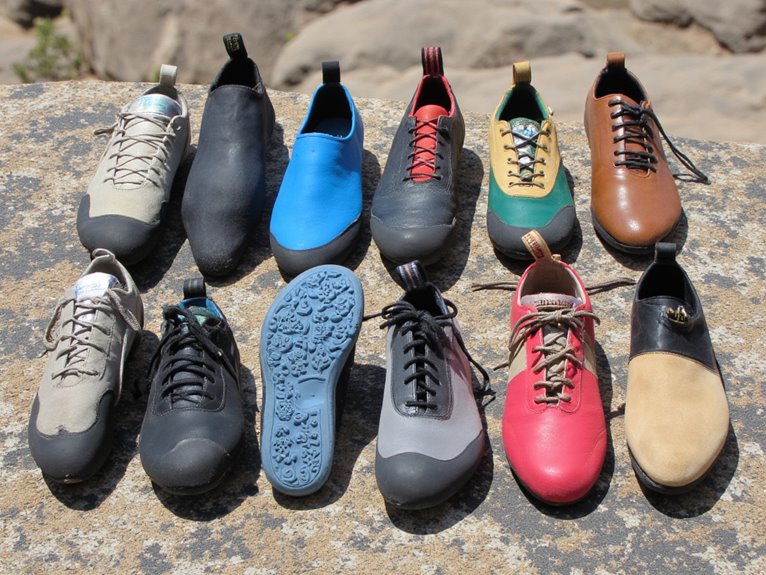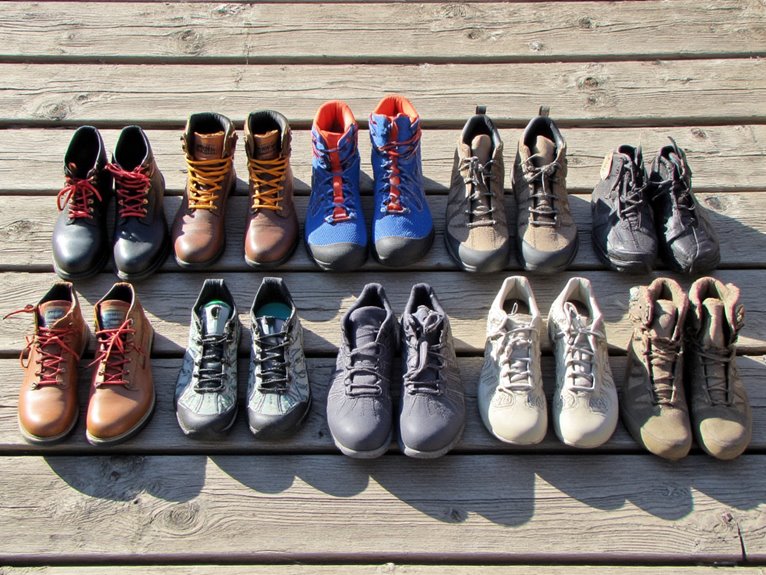What Size Backpack for Hut to Hut?
When planning a hut-to-hut trip, choosing the right backpack size is vital. A good rule of thumb is to opt for a pack with a capacity of at least 40-50 liters for multi-day trips. However, consider the type of gear being carried, trip duration, and personal comfort levels when selecting a pack size. A larger pack may be necessary for longer trips or those requiring more gear. By evaluating your packing needs, typical gear requirements, and comfort considerations, you can find the perfect balance between gear requirements and mobility. Discover how to strike this balance and optimize your backpack capacity.
We are supported by our audience. When you purchase through links on our site, we may earn an affiliate commission, at no extra cost for you. Learn more. Last update on 1st January 2026 / Images from Amazon Product Advertising API.
Determining Your Packing Needs
Before setting out on your hut-to-hut adventure, take stock of your personal needs and the terrain you'll be traversing to determine the essential items to pack. Consider the length of your trip, the weather forecast, and the amenities available at each hut. Think about your personal comfort level with respect to sleeping, eating, and hygiene. Will you need a sleeping bag and pad, or will the huts provide these essentials? Do you have specific dietary needs or preferences? Answering these questions will help you identify the must-haves for your trip, ensuring you pack efficiently and effectively. By carefully evaluating your needs, you'll be able to create a packing list that balances comfort with practicality.
Typical Gear for Hut-to-Hut Trips
When venturing out on a hut-to-hut trip, a well-curated selection of gear is essential to guarantee a comfortable and enjoyable journey. Packing the right equipment can make all the difference in your overall experience. The following items are typical necessities:
- Clothing: Pack layers of breathable, moisture-wicking clothing that can adapt to changing weather conditions.
- Shelter and Sleeping Gear: Bring a lightweight sleeping bag, pad, and a compact tent or tarp to provide a comfortable night's rest.
- Personal Hygiene and First Aid: Don't forget to pack essentials like biodegradable soap, toilet paper, and a basic first aid kit.
Remember to prioritize and tailor your gear list to the specific demands of your trip, taking into account factors like weather, terrain, and personal preferences, and think carefully about what to include.
Pack Size for Multi-Day Trips
Opt for a pack size that can comfortably hold all your gear without compromising on comfort or mobility, as an overloaded pack can quickly detract from the overall enjoyment of your hut-to-hut trip. A good rule of thumb is to look for a pack with a capacity of at least 40-50 liters for multi-day trips. This will provide ample space for your clothing, sleeping gear, and other essentials while allowing for easy maneuverability. Consider the type of gear you'll be carrying and the duration of your trip when selecting a pack size. A larger pack may be necessary for longer trips or those requiring more gear.
Factors Affecting Backpack Size Choice
The choice of backpack size is influenced by several key factors, including the type and quantity of gear, personal comfort levels, and the specific demands of the hut-to-hut trip.
When selecting a backpack, it's essential to bear in mind the following factors:
- Gear requirements: The type and quantity of gear you need to carry, such as clothing, sleeping bag, and cooking equipment.
- Personal comfort: Your personal comfort level with pack weight and size, as well as any physical limitations you may have.
- Trip demands: The specific demands of your hut-to-hut trip, including the distance, terrain, and weather conditions.
When selecting a backpack, it's essential to take into account the following factors:
Comfort and Mobility Considerations
As you prepare for your hut-to-hut trip, comfort and mobility considerations play a crucial role in ensuring a successful and enjoyable journey. A backpack that is too large or heavy can hinder your mobility, making it difficult to navigate challenging terrain. Consider a pack with padded shoulder straps, a hip belt, and a back panel to distribute the weight evenly and provide ventilation. A comfortable pack will allow you to maintain a steady pace and enjoy the scenery. Additionally, look for features such as multiple compartments, pockets, and attachment points to keep your gear organized and easily accessible. This will help you stay focused on the trail ahead, rather than worrying about your pack.
Size and Weight Trade-Offs
When it comes to backpacking for hut-to-hut trips, finding the optimal balance between size and weight is crucial. Packing light is essential to ensure comfort and mobility, but sacrificing too much volume can compromise on essentials. As we weigh the trade-offs between weight and volume, we'll explore the principles of packing smart to achieve the ideal balance.
Pack Light, Pack Smart
Efficiency is key in the matter of packing for a hut-to-hut adventure, where every ounce and inch counts in the delicate balance between comfort and convenience. To achieve this balance, it's essential to pack light and smart. Here are three essential tips to keep in mind:
- Choose multi-use items: Opt for gear that serves multiple purposes, reducing the overall weight and bulk of your pack.
- Pack only the essentials: Be ruthless when deciding what to bring – if you don't need it, don't pack it.
- Roll and compress clothing: Rolling and compressing clothing items like socks and shirts can help reduce their volume, making the most of your backpack's space.
Weight Versus Volume
In packing for a hut-to-hut adventure, every item's weight and volume must be carefully considered, as a heavier pack can be mitigated by clever use of space, but only if you're willing to make some trade-offs. A lighter pack may require sacrificing some comfort or convenience, while a more spacious pack may necessitate carrying extra weight. The key is finding a balance between the two. Consider compressible gear, multi-use items, and packing essentials only. By prioritizing your needs and making intentional choices, you can optimize your pack's weight and volume for a more enjoyable journey. Remember, every ounce counts, and every cubic inch is precious real estate.
Choosing the Right Capacity
When choosing the right backpack capacity for a hut-to-hut adventure, it's essential to strike a balance between packing light and bringing essentials. A well-sized backpack should accommodate the must-haves while avoiding unnecessary bulk. By considering packing light essentials and backpack size guidelines, you can optimize your capacity for a comfortable and efficient journey.
Packing Light Essentials
A backpack's capacity should be carefully considered to guarantee it can comfortably hold all essential items without compromising on comfort or mobility during the hut-to-hut journey. Packing light is crucial to ensure a comfortable and enjoyable trip. To achieve this, focus on the most essential items that serve multiple purposes.
Here are three must-haves to include in your backpack:
- Multi-tool or pocket knife: A compact tool with various functions can help with tasks such as cutting, tightening, and opening.
- Quick-drying towel: A lightweight, compact towel is essential for drying off after a refreshing lake swim or shower.
- Water purification tablets or filter: Ensure access to safe drinking water throughout your journey.
Backpack Size Guidelines
The ideal backpack capacity for a hut-to-hut trip is largely determined by the duration of the journey, the type of gear required, and the individual's packing style. For short trips (1-3 nights), a 30-40L backpack is sufficient, while longer trips (4-7 nights) require a 40-50L capacity. For extended journeys (8+ nights), a 50-60L backpack is recommended. Additionally, consider the type of gear you need to carry, such as clothing, sleeping bag, and cooking equipment. A general rule of thumb is to pack light and prioritize essential items. By choosing the right backpack capacity, you can guarantee a comfortable and enjoyable hut-to-hut experience.



